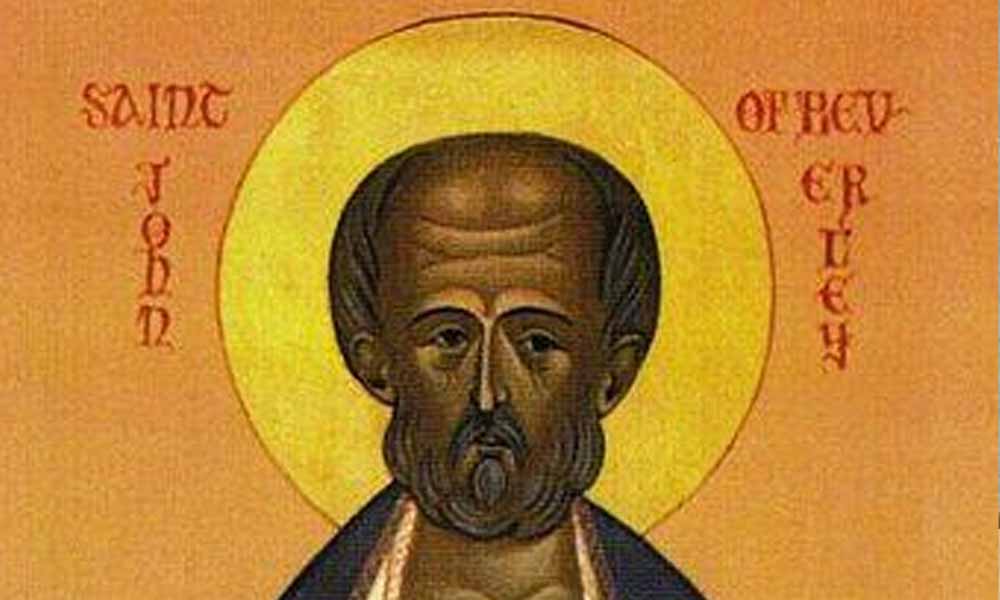If St. John of Beverley were to visit the town he helped shape in the early 8th century, the first thing that would surely catch his eye would be the Beverley Minster. The grandeur of our Gothic masterpiece—its soaring spires, intricate stone carvings, and elaborate stained glass—would leave him in bewildered awe. For St. John, this would be a testament to the enduring legacy of the spiritual community he founded, standing tall as the centre of Beverley’s identity for over a millennium.
The Minster remains the heart of Beverley. While modern life continues to evolve around it, our unique and historic place of worship offers a powerful connection to the past—a link that St. John himself would recognise. Were he to step inside, the atmosphere would no doubt evoke memories of his own ministry, spent building a community of faith and prayer. And yet, as he gazed around the town today, he might also ask himself: What is Beverley now? How does a town that was once defined by monastic quietude and pilgrimage reconcile itself with the noise and bustle of 21st-century life?
A town caught between its past and present
Beverley today is a town caught between the past and the present—a place where history and modernity coexist in sometimes surprising harmony. A town in the heart of the Wolds, Beverley has always been defined by its natural landscape—nestled between the banks of the River Hull and Beverley Beck, with the gentle rise and fall of the hills that characterise the East Yorkshire countryside. In this respect, Beverley remains unchanged. But a stroll through its streets today would show that many other aspects of the town have undergone significant transformation.
Take, for example, the Saturday Market. Though it may no longer be the site of trading livestock or bustling medieval merchants, this historic square continues to be the focal point of the town. The market today is more likely to feature fresh produce, artisan breads, and locally-made goods than barrels of grain or bundles of wool—but it’s still a place where the community gathers, as it has for centuries. St. John would recognise the spirit of Beverley in the way locals continue to come together here, whether to buy, sell, or simply chat. A sign, perhaps, that some things never change.
But modern Beverley isn’t just about the past. The Flemingate Centre—a shiny, modern shopping and leisure complex—would likely leave St. John scratching his head. Imagine a 21st-century shopping mall in a town built for monasteries! While St. John may have found the idea of a commercial hub strange, he would likely be impressed by the economic energy it brings to Beverley. Here, Beverley residents can shop for high street fashion, dine in chain restaurants, or catch the latest film—a far cry from the monasteries and humble shops of St. John’s time.
Progress
But as much as Beverley embraces progress, it also grapples with the growing pains of a modern town. Road construction is an ongoing feature of Beverley’s landscape as the town continues to expand. From diversions and traffic congestion to long-term roadworks that seem to stretch on endlessly, the construction of new developments serves as a reminder of the town’s transition. Were St. John still walking these streets, he might find himself wondering how a town once built for pilgrims now faces the challenge of dealing with the frustrations of modern-day traffic. It’s a far cry from the peaceful dirt paths he would have known—yet another sign of Beverley’s constant evolution.
The Theology of Molescroft Chinese
Perhaps the most curious thing about Beverley today is the way in which its residents continue to hold tight to their roots, all the while navigating the complexities of modern life. A town where the debate over the best Chinese takeaway—especially the famed Molescroft Chinese—rages on like an ancient theological dispute might have in St. John’s day. With the passion of an evangelist and the loyalty of a true Beverlonian, people continue to argue over crispy duck and sweet and sour sauce with all the fervor of a church council meeting. It’s a reminder that, despite everything, Beverley’s spirit of community endures—albeit now with a side of egg fried rice.
Through it all, Beverley remains tied to its origins. It’s still a town in the Wolds, perched on the banks of its rivers, surrounded by the same hills that have defined the landscape for centuries. St. John would likely find comfort in the fact that, despite all the development and change, the natural beauty of Beverley has remained untouched. The rhythms of nature—like the steady flow of the river—continue as they always have, grounding the town in a timeless cycle that ties the present to the past.
What is Beverley?
So, what is Beverley? In many ways, it’s the same town St. John founded over a thousand years ago—a place where community, faith, and the land continue to shape its people. But it’s also a town that has changed in ways St. John might never have imagined. The Minster still stands as a focal point, and the Saturday Market continues to bring the community together, but the modern challenges and developments of Beverley show that the town is far from frozen in time. Whether it’s the rise of shopping centres or the ongoing traffic chaos, Beverley is a town of contradictions—a place that honours its past while looking towards the future. And in that balance, St. John might see the town he once founded: a community that continues to grow, change, and adapt, all the while holding fast to the spirit he instilled so many centuries ago.
About St John
St. John of Beverley (c. 640–721) was an Anglo-Saxon bishop and a revered saint of early England. Born in Harpham, Yorkshire, he was educated at the monastery of Whitby, under the guidance of St. Hilda, before dedicating his life to the church. St. John became the Bishop of Hexham in 687 and later the Bishop of York in 705, where he was known for his deep piety, pastoral care, and numerous miracles of healing. He was instrumental in the spiritual development of his community and in the education of young men. In 714, he founded a monastery in Beverley, where he spent his later years. He died in 721 and was buried at Beverley, which became a place of pilgrimage. St. John is remembered for his humility, devotion to God, and lasting impact on the Christian faith in England.
Want to write for Beverley Review? We are a community writing project seeking to unlock stories and viewpoints form within Hull, Beverley and East Riding. Anyone can contribute, you dont have to be a journalist or writer. Find out more here.


